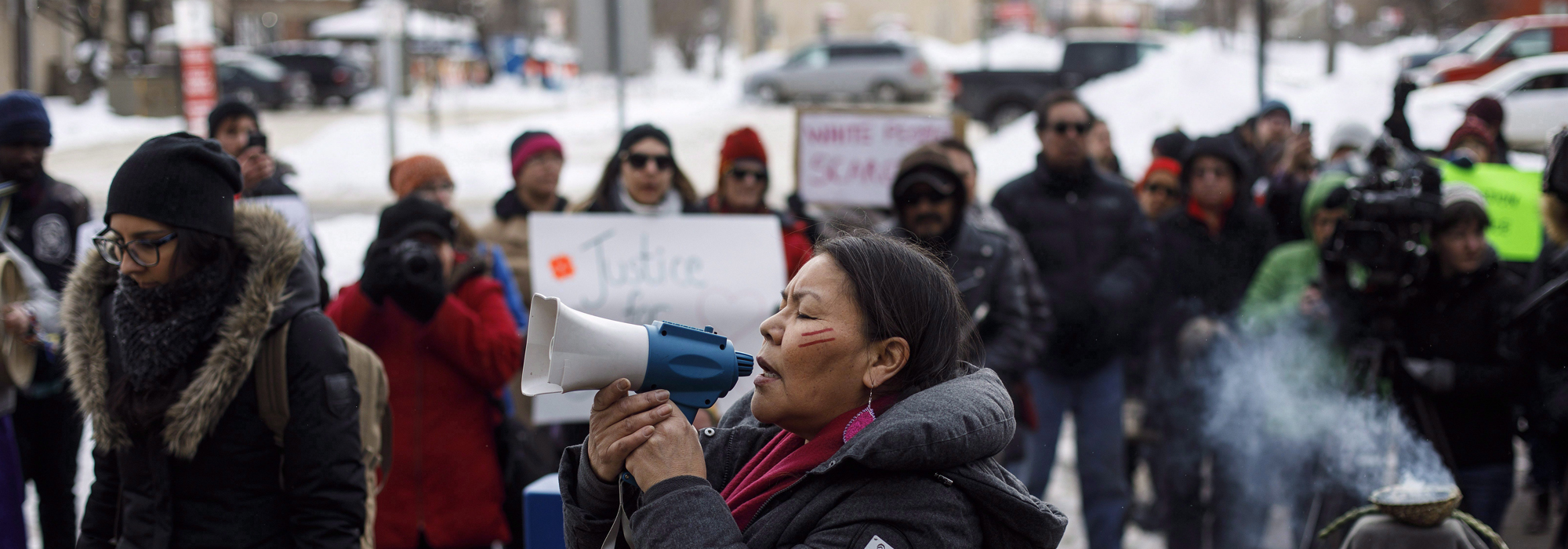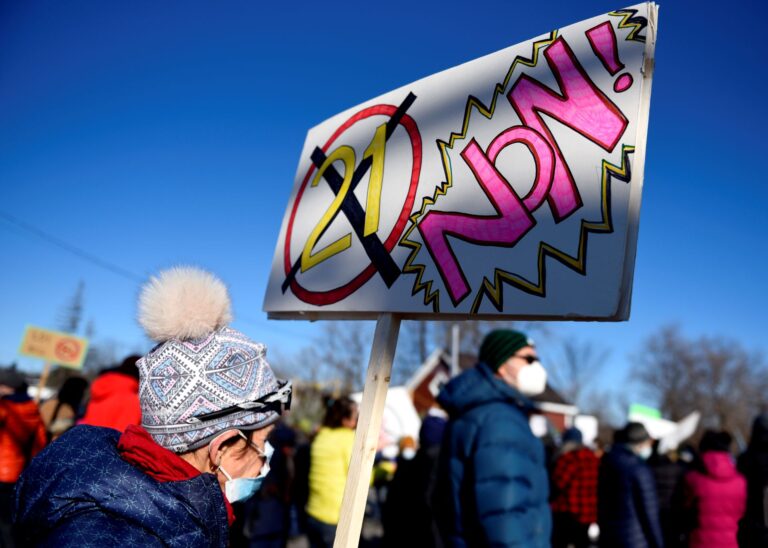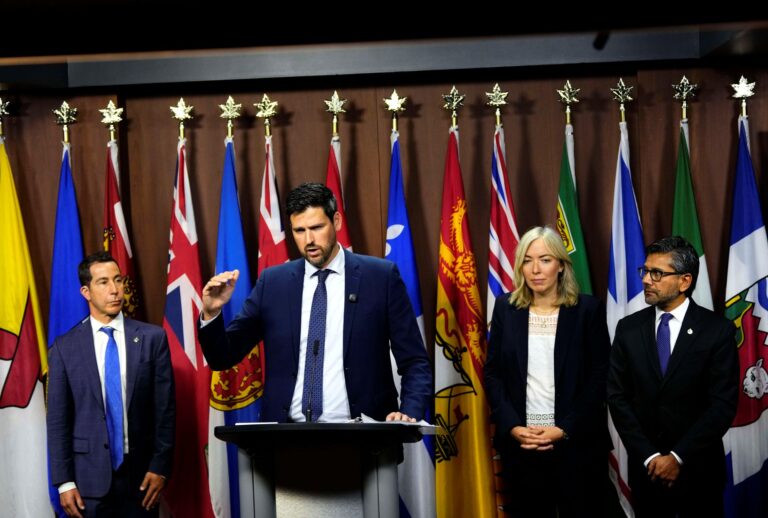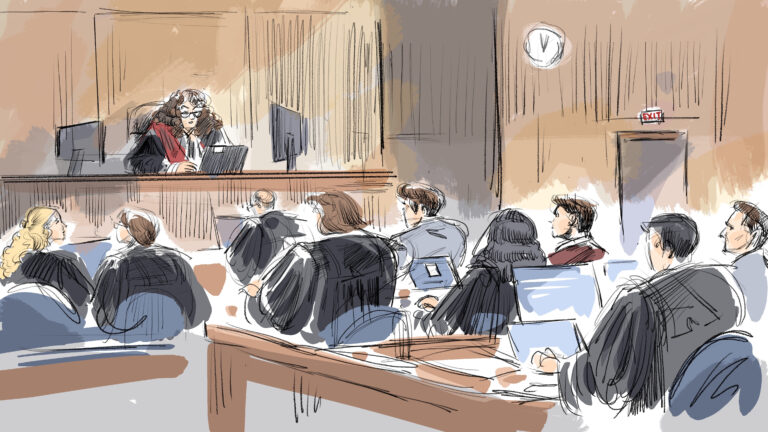(This article has been translated into French.)
The recent acquittal by a jury of Gerald Stanley, a white farmer, in the shooting death of Colten Boushie, an Indigenous man from the Red Pheasant First Nation in Saskatchewan, has again raised issues about the way the criminal justice system deals with Indigenous people. The concerns the case raised focused not only on the verdict by the all-white jury but also on how the jury was selected, in particular the fact that the defence was able to rely on the use of peremptory challenges to prevent any Indigenous people from serving on the jury.
The Stanley case rightly became a major news item, and the Prime Minister and the Minister of Justice expressed their support for the Boushie family following the verdict, also to significant public notice. For Indigenous people, the case was simply another milestone on the long and well-travelled road of injustice.
Abolishing peremptory challenges — when lawyers do not have to give any reason for refusing to allow a person to sit as juror — was a recommendation of both the Manitoba Aboriginal Justice Inquiry, which reported in 1991, and the First Nations Jury Review in Ontario in 2013. These are but 2 of the 13 provincial and federal inquiries, commissions and studies that have looked at the issue of Indigenous people and the justice system since 1989. And there are more on the horizon, as the National Inquiry into Murdered and Missing Indigenous Women and Girls and the Public Inquiry Commission on Relations Between Indigenous Peoples and Certain Public Services in Québec will also be addressing issues of justice.
These commissions and inquiries have all come to the same conclusion: that the criminal justice system in Canada is failing Indigenous people.
This conclusion was also reached by the Supreme Court of Canada on three occasions. In 1998 in R. v. Williams, the Court found that jurors could be asked questions about their biases toward Indigenous people charged with criminal offences, since discrimination toward them was “rampant.” In 1999 in R. v. Gladue, the Court found that the over-representation of Indigenous people in Canada’s prisons was a “crisis in the Canadian criminal justice system.” The Court found that over-representation was “only the tip of the iceberg insofar as the estrangement of the aboriginal peoples from the Canadian criminal justice system is concerned.” In R. v. Ipeelee in 2012, the Court restated its findings in Gladue. It attributed the over-representation of Indigenous people to the impacts of colonialism, such as, but not limited to, the residential school system. The Court consistently pointed out in these cases that the issues facing Indigenous people are based on the direct and systemic discrimination they face every day in the justice system.
Gladue and Ipeelee both concerned themselves with interpreting section 718.2(e) of the Criminal Code, a provision that was introduced in 1996 as part of a comprehensive set of amendments dealing with sentencing in Canada. The section states that judges should look for alternatives to incarceration for all offenders, but with particular attention to the circumstances of Indigenous people. The Supreme Court in Gladue said judges had a role in over-representation and they should ensure that they had the information necessary to allow them to meaningfully address this provision of the code. In Ipeelee the Court decried the failure of the system to answer the call of Gladue and renewed its call for changes in the way Indigenous offenders were sentenced by the courts.
Despite the findings of commissions and courts, and despite promises by prime ministers to address this issue — specifically Prime Ministers Jean Chrétien (in the 2001 Throne Speech) and Justin Trudeau (in his 2015 mandate letter to the Minister of Justice) — the numbers tell a different story. Since the late 1990s, the proportion of Indigenous people who make up Canada’s jail population has increased from slightly more than 10 percent to over 25 percent. The numbers are worse for Indigenous women, who make up over one-third of all women in jail. And while Canada now imprisons fewer and fewer young people, more and more of those young people are Indigenous.
These numbers, and their seemingly inexorable upward trend, might suggest that the problem of over-representation is intractable, and that nothing can be done to reverse the trend. But if the problem of over-representation is rooted in systemic and direct discrimination, to just throw up one’s hands is to say that, as a society, we don’t care that our major institutions continue to fail Indigenous people. It’s not that the problem can’t be fixed. It’s that the will to fix it is lacking.
There are things that can be done and are being done to meaningfully address the over-representation of Indigenous people and the other factors that have led to the estrangement of Indigenous people from the justice system that the Supreme Court noted in Gladue. Legislative change is part of the process. For example, the federal government could, as the Manitoba and Ontario reports suggested, eliminate the use of peremptory challenges.
There are things that can be done and are being done to meaningfully address the over-representation of Indigenous people and the other factors that have led to the estrangement of Indigenous people from the justice system.
The federal government could also amend the Criminal Code to eliminate mandatory minimum sentences, which flourished under the Stephen Harper government. Mandatory minimum sentences are being struck down one by one by courts across the country but many remain, preventing judges from looking to meaningful alternatives to imprisonment for Indigenous and non-Indigenous offenders.
The government has promised to bring in legislation to put an end to mandatory minimums, but it has not yet done so. And even if it does introduce such legislation, there is no guarantee that it will be passed. Legislation it introduced in 2016 to eliminate mandatory victim fine surcharges that accompany a criminal conviction, which are impossible for homeless and poor people to pay, has not moved past first reading.
Legislative amendments are important, but they are not enough. Indigenous over-representation in prisons grew under Liberal and Conservative governments before and after the proliferation of mandatory minimum sentences. More is necessary.
Constitutionally, while criminal law is a federal responsibility, the administration of justice is a provincial-territorial responsibility. That is why prosecutions under the Criminal Code — a federal statute — are carried out by Crown attorneys appointed by the province, usually in provincial courts, where judges are also provincially appointed. This is also the reason that so many of the inquiries and commissions mentioned earlier were called by provinces, because provinces have a significant role to play in addressing these issues.
The differences among provinces and territories in the way they have responded to Indigenous justice concerns are quite stark and revealing. For example, in Ontario, the province and Legal Aid Ontario fund the production of what are referred to as Gladue reports. These reports, prepared by writers working for Indigenous organizations, provide judges, lawyers and Crowns with information on the backgrounds of the offenders who are being sentenced and suggest alternatives to incarceration where possible. The work of the Gladue writers is supported by Gladue caseworkers or aftercare workers, who work with offenders after they are sentenced. Approximately 1,000 Gladue reports are written annually in Ontario. Alberta also has a robust Gladue report process, although it is administered very differently. Gladue reports are also available in Nova Scotia, Prince Edward Island, Quebec and British Columbia, and will soon be in Yukon. On the other hand, there is no funding for Gladue reports in Saskatchewan and Manitoba, provinces where one assumes the need is certainly as great as in Ontario.
The development of courts with a particular emphasis on working with Indigenous offenders and accused persons is another way to address estrangement from the legal system. There are 13 Gladue or Indigenous persons courts at the provincial court level in Ontario and five in British Columbia. There are no such courts in Quebec or Manitoba, one in Saskatchewan (a Cree-speaking circuit court) and two in Alberta.
Initiatives such as Gladue reports and Indigenous persons courts make a real difference. Where Gladue reports are available, Crowns change their positions on sentencing, and jail is relied upon much less. This should not really come as a surprise. For the most part, sentencing in Canada is done very quickly, and no one in the court is provided with much information about the offender. Systemic biases that favour nonjail sentences for those with homes and jobs work against Indigenous offenders, who are generally at the lowest rungs of the socio-economic ladder and are more likely to be homeless or marginally housed than other offenders. The intergenerational impact of things like residential school are invisible to judges unless someone raises those concerns — and it is usually the Gladue report that serves that function. Judges and lawyers are not always familiar with noncustodial options, particularly those offered by Indigenous organizations. Gladue reports provide that information as well and thus offer real options for sentencing.
Studies have shown that Indigenous persons courts — or First Nations courts, or whatever name they choose to go by — make a real difference in how Indigenous people feel they are treated by the legal system. These courts do not create a faith in the system as a whole but rather are seen by Indigenous people as a place where they will be listened to, where their concerns and those of their communities will be heard and where, perhaps, they might actually get a sense of justice being done.
Because these initiatives are at the provincial or territorial level, the federal government has seen little need to become involved, but these initiatives require funding to thrive. The federal government provides very little support for the production of Gladue reports. Indigenous-specific courts have less need for resources but still require funding to allow for Elders or Indigenous knowledge helpers to participate in the courts. While there is no guarantee that federal funding would encourage recalcitrant provinces to actually start to engage with the realities faced by Indigenous people, it would allow those provinces and territories that are moving positively to accomplish much more.
Legislative change is certainly useful in addressing the crisis facing the legal system with respect to Indigenous people. Section 718.2(e) is an example of legislation that has made a difference. There is no doubt that if and when some of the more regressive aspects of the previous government’s criminal law agenda come off the books, there will be more room for creative responses from the courts.
Change is not only possible, it is necessary and vital. Some of that change will have to come from a fundamental reform of the way justice is delivered, and that will mean the development of Indigenous-controlled justice systems. There are also many examples of creative responses that have led to a positive engagement of Indigenous people with the current justice system. I have described some of them in this article.
If we are serious about reconciliation, we have to recognize that the justice system has been a place of injustice for Indigenous people. That is what it was for the family of Colten Boushie. That is what it is on a daily basis for Indigenous people across the country. It doesn’t have to be that way. We know what works. We are continuing to discover and develop new initiatives. What is needed is a commitment from the federal and provincial governments to be a part of that change. And that will require not only political will and legislative amendments, but also funding.
This article is part of the Widening the Lens on Criminal Justice Reform special feature.
Photo: A chant is performed during a rally in response to Gerald Stanley’s acquittal in the shooting death of Colton Boushie in Edmonton, Alberta, on February 10, 2018. THE CANADIAN PRESS/Jason Franson.
Do you have something to say about the article you just read? Be part of the Policy Options discussion, and send in your own submission. Here is a link on how to do it. | Souhaitez-vous réagir à cet article ? Joignez-vous aux débats d’Options politiques et soumettez-nous votre texte en suivant ces directives.











